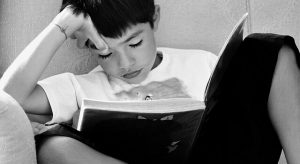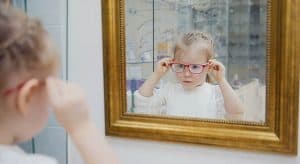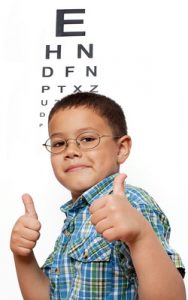If vision is learned, then it can be improved.
Dr. Donald Getz (1931-2012) was a world-renowned lecturer, author and leader in vision therapy, he taught the idea that since vision is learned, it can be improved.
If a child lacks the necessary visual abilities, he might be trained to acquire them with the help of vision therapy techniques.
Learning requires strong visual skills
Because children learn about 75 to 90 percent via their visual pathways, it stands to reason that if those pathways are under-developed or disrupted, a child will not develop to their full potential.
There are a range of visual skills needed for academic success;
Visual acuity
There are many important visual skills needed for learning. Though it may sound surprising, visual acuity, or the ability to see clearly, is one of the less crucial skills.
This is the so-called 20/20, 20/400, and other measurements of vision. The number 20/20 simply means that a person can see clearly from a distance of 20 feet away.
Unfortunately, how well a child sees at 20 feet has no bearing on how well he sees at a reading and learning distance, which is roughly 11-16 inches from the face.
In fact, Dr. Donald Getz believes that measuring vision only using an eye chart exam, which determines visual acuity, causes more harm than good.
That’s because it provides a false sense of security to both parents and teachers by implying that vision is normal when the child’s key visual abilities may not be developed.
Binocular coordination
The ability to coordinate the two eyes together is one of the most important visual skills for learning.
Although this coordination is automatic in many children, in other cases a child must learn to use their eyes in tandem.
Some children, for example, acquire a visual condition known as exophoria, which is a tendency for the eyes to deviate outward.
This can cause the child to experience headaches, fatigue or eye strain and impact their ability to complete homework or study for an exam.
If you are concerned about your child’s school grades, schedule an eye exam with an eye doctor near you to have your child’s vision evaluated.
SEE RELATED: Does My Child Have Dyslexia?
Convergence insufficiency
Convergence insufficiency is a binocular vision condition that affects the ability to read and reduces a child’s attention span.
This condition occurs when the eyes are unable to effectively work together to focus on a near object. As a result, the eye muscles need to work harder to focus on reading and other near vision tasks – impacting reading, spelling, comprehension and overall school grades.
Convergence insufficiency can affect a child’s reading and learning success, and even impact concentration and sports performance.
Form perception
Visual form constancy is a visual perceptual talent that enables a child to recognize that a shape, form, or object remains the same regardless of its position, size, or location.
When you see the letter ‘A,’ for example, it’s always the letter ‘A,’ regardless of whether it appears as part of a word, as larger text, or in a different font.
Attention span
Attention span has been linked to academic success, according to Dr. Donald Getz.
With each eye fixation, many children see only one word at a time, as if they were reading each word through a narrow straw.
Learning to view two, three, or more words with each eye fixation can help a child read faster. When the range of perception is broad, it is easy to detect the difference in reading for meaning.
Visualization
This is similar to the ability to visualize things in your mind.
According to Dr. Getz, the ability to visualize is inextricably linked to the ability to think, analyze and remember.
In other words, thinking is linked to the ability to abstract from details, and visualization is an important part of this process. Visualization is a skill that may be learned.
There are many other visual skills that are linked to reading. If you take just one thing from this article it is that there is more to vision than just 20/20.
LEARN MORE: Vision For School
Schedule an eye exam with an eye doctor near you to have your child’s vision evaluated.
About 80% of learning occurs via a child’s visual pathways, it stands to reason that if those pathways are under-developed or disrupted, a child will not develop to their full potential.
Dr. Getz outlines 5 essential visual skills that can impact your child’s school grades.









